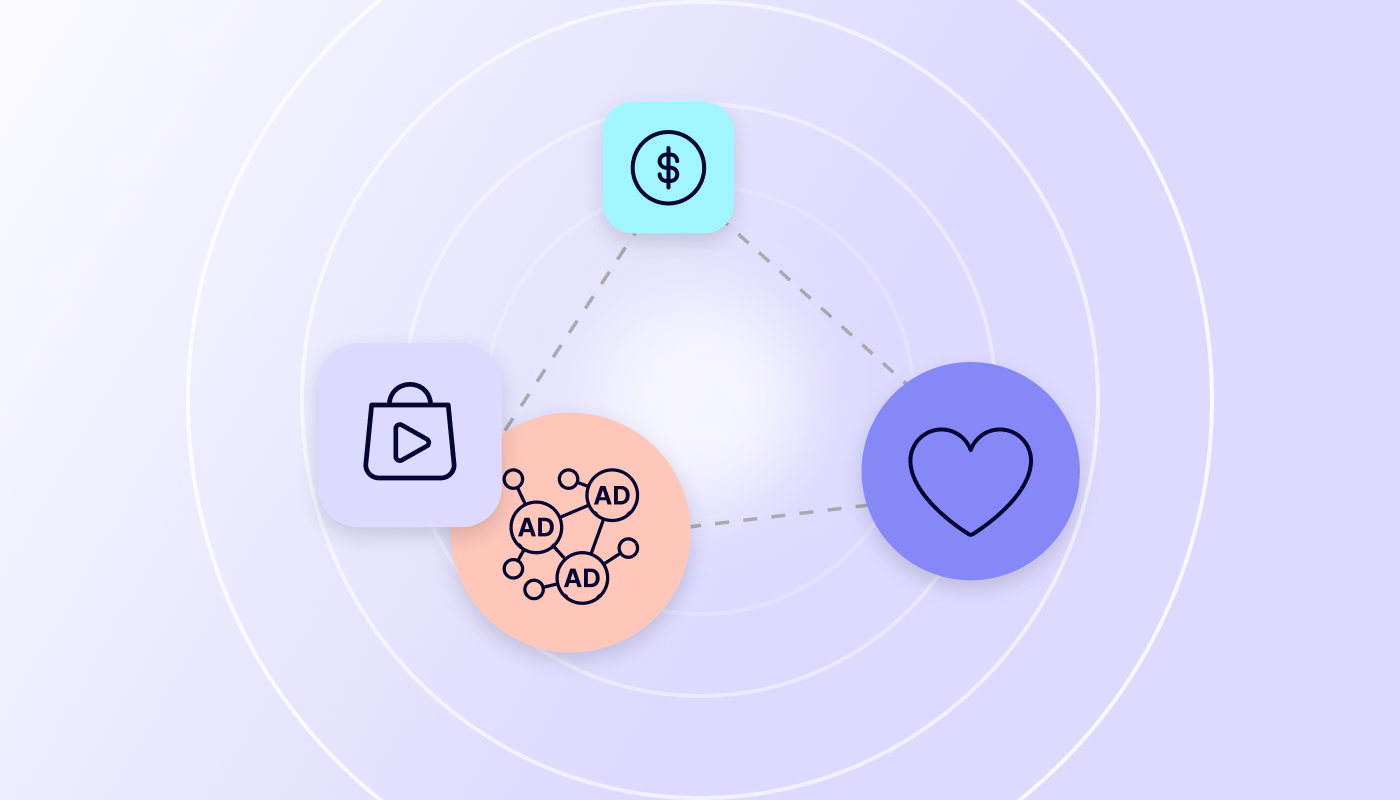Many discussions about privacy in programmatic advertising focus on mobile and web. But advertisers and publishers alike also need to pay attention to how connected television (CTV) is shifting in an increasingly privacy-centric world. In a recent Q&A with AdvertisingWeek, we explored the evolution of privacy in CTV, IAB’s Transparency Consent Framework, IP addresses, ID-less targeting, and much more.
TV has traditionally been seen as privacy-safe. How has that changed as the connected TV (CTV) ecosystem has evolved?
Fragmented development across digital and linear channels has made TV planning, activation and measurement more complex. In the advanced or addressable TV space, a key element of that has been transferring online data technologies and practices so that media owners can offer cutting-edge targeting and effective performance analysis for advertisers. This includes moving away from traditional limited (and opted-in) panels and shifting toward large-scale individual tracking using personally identifiable information (PII).
Unsurprisingly, this has raised concerns around user privacy and questions about what should be done to improve data protection. For instance, a recent CTV report from the American Association of Advertising Agencies (4A’s) has encouraged deeper consideration of every privacy-related decision in line with several factors, including a company’s market position, how data usage balances business value versus privacy cost and compliance with regional regulations.
But while these steps seem theoretically relevant, they are also likely to be too convoluted for CTV. In practice, enabling low-friction and future-proof growth will call for versatile and privacy-safe identity management approaches that can easily adjust to the needs and specifications of multiple media environments.
When will the Transparency Consent Framework (TCF) be applied to CTV?
While third-party cookies, device identifiers, and cross-industry IDs continue to play a major role in tailored ad delivery for web and mobile, their use is increasingly subject to consent-based provisions laid out by data legislation and tech providers. It therefore makes sense that the TCF — built to help keep advertising in line with regulations such as the GDPR and CCPA — has already gained significant ground in these areas.
Despite attempts from leaders such as the Internet Advertising Bureau (IAB) to introduce opt-in mechanisms via its guidelines on using over-the-top platforms (OTT) advertising identifiers, the emerging CTV market has so far resisted standardization. Yet amid greater reliance on AVOD and hybrid monetization models, alongside tighter data handling rules from key tech players, avoidance is becoming less of an option.
Google, for example, has recently announced plans to roll out its European consent policy to CTV, meaning publishers and developers using Google products must integrate with the TCF and implement a Google-certified consent management platform (CMP). Originally set to go into effect last month, the due date is now deferred to July 2025 but still very much on the horizon.
What is the long-term value of identifiers based on first-party data (such as IP addresses)?
Although seen as a “must-buy” for several years now, and especially important in branding campaigns, CTV’s addressability and measurement issues have posed persistent barriers to performance assessment that often put its ROI in doubt. Approaches that rely on first-party data such as IP addresses to identify specific households can help address this problem by supporting more precise ad delivery and evaluation.
At the same time, however, they also have their difficulties. Topping the list of downsides is the fact that many global data laws consider IP addresses to be PII — including the EU and UK GDPR. Gaining consent to use IP addresses for ad purposes in CTV environments isn’t easy in these cases. Added to this is the strong likelihood that browser-based efforts to mask or disguise IP addresses, such as Apple’s Intelligent Tracking Prevention and Google’s Gnatcatcher, will expand to CTV apps and platforms sooner or later.
In the future, we can expect heavy ongoing IP address use wherever possible across the CTV ecosystem. But as consent requirements incrementally chip away at data access, advertisers looking to maximize scalability will need to begin exploring a wider range of future-proof options that enable data sharing in a standardized and privacy-first way.
What are the ID-less alternatives for CTV advertising?
After years of innovation to facilitate cookie-free operations, the answer here is almost limitless. Take contextual advertising as an obvious example. Building on the historic method of marrying ads with basic TV programming categories, machine learning progress has created opportunities to achieve refined content analysis that enables granular classification by subject matter and sentiment, which ensures effective and ID-less matches.
Cohort-based methods also provide ways to use device data to drive smart segmentation informed by anonymized interests or characteristics, without exposing user-level information. While tools rooted in third-party data such as Google’s Topics API are the typical example, seller-defined audiences aren’t dissimilar: media owners leverage user-supplied first-party data from sites, apps, and CTV platforms to create targetable audience groups.
From a measurement perspective, brand uplift and conversion studies, panel-based ad ratings, statistical sampling and media mix modeling are the most privacy-conscious CTV choices.
Why is attention becoming a more important metric? Aren’t ads always 100% viewable?
It’s well-recognized that the high viewability of TV ads doesn’t always mean that they are seen by intended viewers, especially with second screening a regular global habit. In around 2015, researchers and vendors began working on tools to measure how audiences engage with ads. As you might expect, results showed that interaction was variable and campaigns that captured more in-the-moment attention drove better conversions.
Subsequent studies proved that longer durations of attention for individual impressions closely correlated to increased impact throughout the marketing lifecycle — a finding that has cemented attention measurement as an essential performance metric that’s frequently more illuminating than simply tracking impression numbers and viewability.
What do you see as the biggest future impacts for privacy on CTV? Will the rising volume of programmatically-traded inventory play a part?
To a great extent, the general TV landscape will keep advancing in the same digital direction. Legacy linear practices of programming ad slots according to pre-determined schedules are rapidly becoming relics of the past while CTV takes a continually rising share of budgets; with European CTV ad spend increasing by 23% last year and outperforming non-social video.
Improved scope for automated trading of CTV inventory is undoubtedly a key growth factor, but it’s far from the only driver capturing interest among media buyers and sellers. At an experience level, innovations in interactive elements such as QR codes and SKOverlay ads are enabling greater audience engagement, brand connection, and ROI. As a prime testing space for post-cookie targeting, CTV is also facilitating innovative experimentation with automatic content recognition (ACR), next-generation contextual advertising, and attention measures that will have far-reaching implications for the entire industry.
Editor’s note: A version of this interview originally appeared on AdvertisingWeek.







